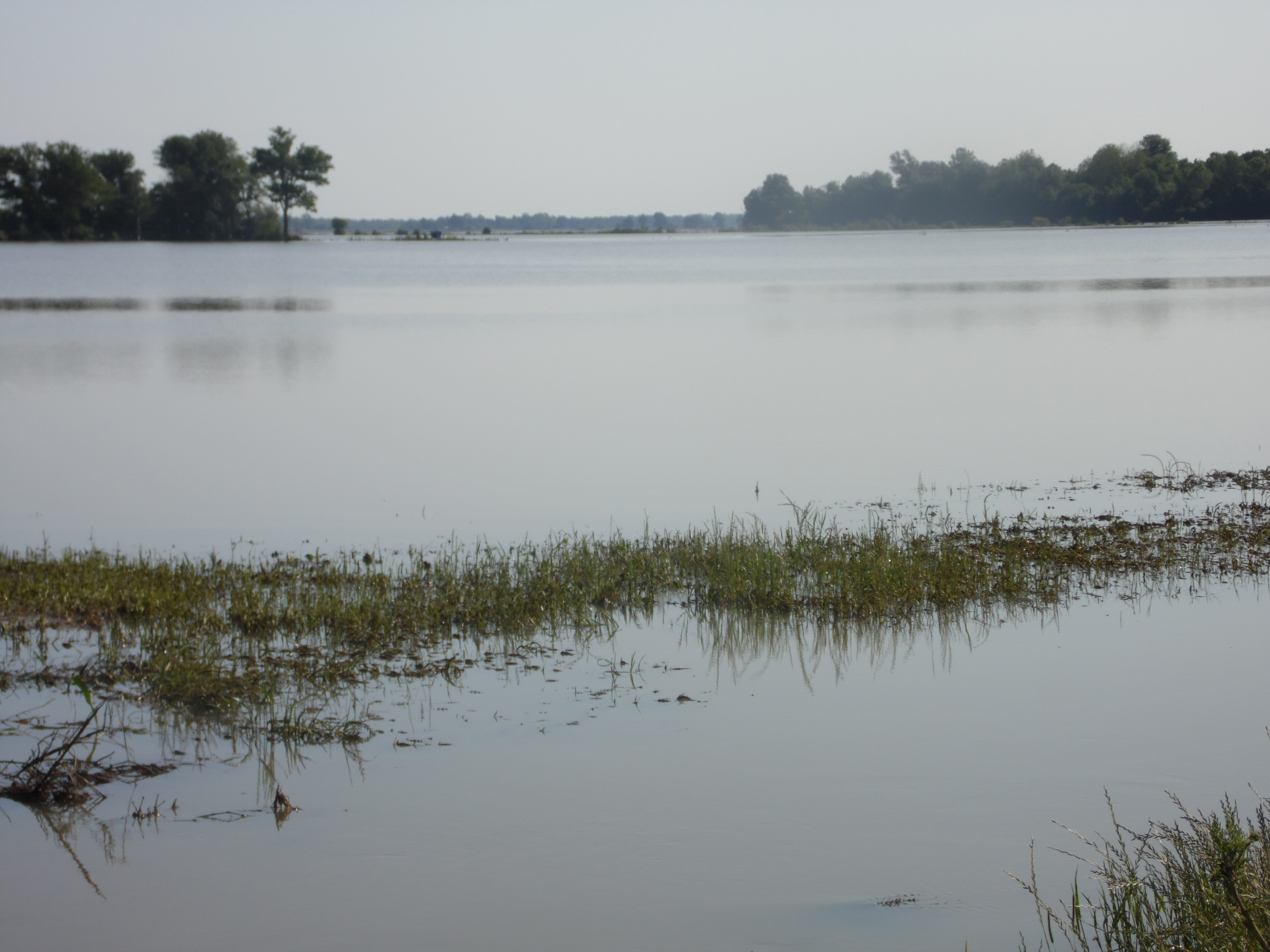After the flood, read label before reapplying herbicide
By Fred Miller
U of A System Division of Agriculture
May 12, 2017
Fast Facts:
- Water breaks down weed control in flooded fields, requiring reapplications after floodwater recedes.
- Follow label instructions carefully to get most effective weed control without exceeding regulatory limits
- Bob Scott: ‘After the water goes down, the weeds are going to follow.’
(500 words)
(With art: https://www.flickr.com/photos/uacescomm/34570206796 )
Download Word version.
FAYETTEVILLE, Ark. —Flooded farm fields present challenges for effective weed control, said Bob Scott, extension weed scientist for the University of Arkansas System Division of Agriculture.
“Most herbicides do not like being under a flood,” Scott said. “Chemical processes associated with hydrolysis and leaching mean the weed control usually breaks.”

Division weed scientist Jason Norsworthy said some herbicides are going to be more tightly bound to soil and aren’t going to move as much as some others, but figuring out which chemistry you have and how the water in a particular field has interacted with it would be difficult to determine.
“Overall,” Norsworthy said, “where there has been a lot of water moving through your field, the efficacy of your weed control will be diminished greatly.”
Reapplication challenges
Norsworthy said weeds generally are going to recover better and faster than cultivated plants.
Scott agrees. “Everyone knows, after the water goes down, the weeds are going to follow,” he said.
And that means weed control will have to be reapplied. In most cases, Scott said, growers will have to apply residual herbicides in replanted fields or those in which the planted crop survived.
However, Scott said farmers must be careful to follow the label instructions for their herbicides. There are season limits on how much can be applied for some products.
For Dual herbicide, as an example, the label states an annual limit of 2.5 pints per acre, Scott said.
“Most growers usually use a pint to a pint and a quarter per acre,” Scott said. “So they can usually make another application after a flood and still be within the limit.”
Other products are only permitted for one application per season, he said. “In that case, you’ll have to move on to another technology.”
Some products require eight to nine weeks between rotations, Scott said. “Be sure to watch for this,” he said.
Read and follow the label
Norsworthy also emphasized the importance of reading and following the labels on weed control products, especially when growers have to replant crops.
“You may have to start over with a new weed control program,” Norsworthy said, “and choose a crop to plant back that works with that product.”
Norsworthy recommended Division of Agriculture publication MP519, “2015 Row Crop Plant-Back Intervals for Common Herbicides,” downloadable here: https://www.uaex.uada.edu/publications/pdf/MP519.pdf
“Growers looking at plant-back can use it to see what you can do,” Norsworthy said.
Scott also warned that growers should watch out for the unexpected. “In floods,” he said, “sometimes things wash out onto fields that present unique weed control problems.”
This has led to some strange weed control calls, he said. “One guy brought me a cottonwood seedling that had landed in his field.”
Scott said the Arkansas Cooperative Extension Service website has useful publications available for download to help farmers deal with weed control problems: https://www.uaex.uada.edu/publications/
In addition to MP519, Scott recommended MP44, “Recommended chemicals for weed and brush control,” for general information on available control technology and proper application practices: https://www.uaex.uada.edu/publications/pdf/mp44/mp44.pdf
About the Division of Agriculture
The University of Arkansas System Division of Agriculture’s mission is to strengthen agriculture, communities, and families by connecting trusted research to the adoption of best practices. Through the Agricultural Experiment Station and the Cooperative Extension Service, the Division of Agriculture conducts research and extension work within the nation’s historic land grant education system.
Pursuant to 7 CFR § 15.3, the University of Arkansas System Division of Agriculture offers all its Extension and Research programs and services (including employment) without regard to race, color, sex, national origin, religion, age, disability, marital or veteran status, genetic information, sexual preference, pregnancy or any other legally protected status, and is an equal opportunity institution.
# # #
Media Contact: Mary Hightower
Dir. of Communication Services
U of A System Division of Agriculture
Cooperative Extension Service
(501) 671-2126
mhightower@uada.edu
Related Links